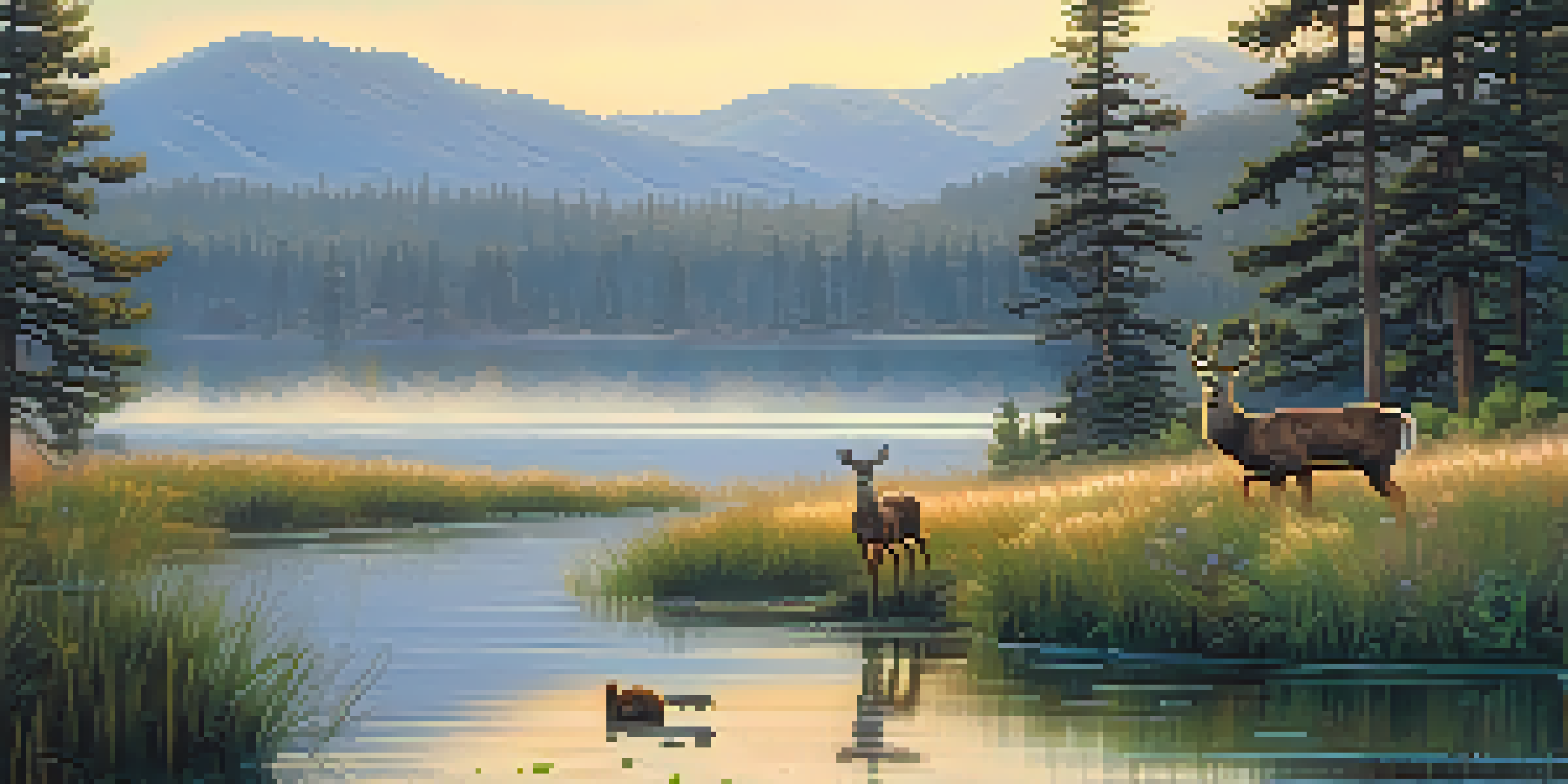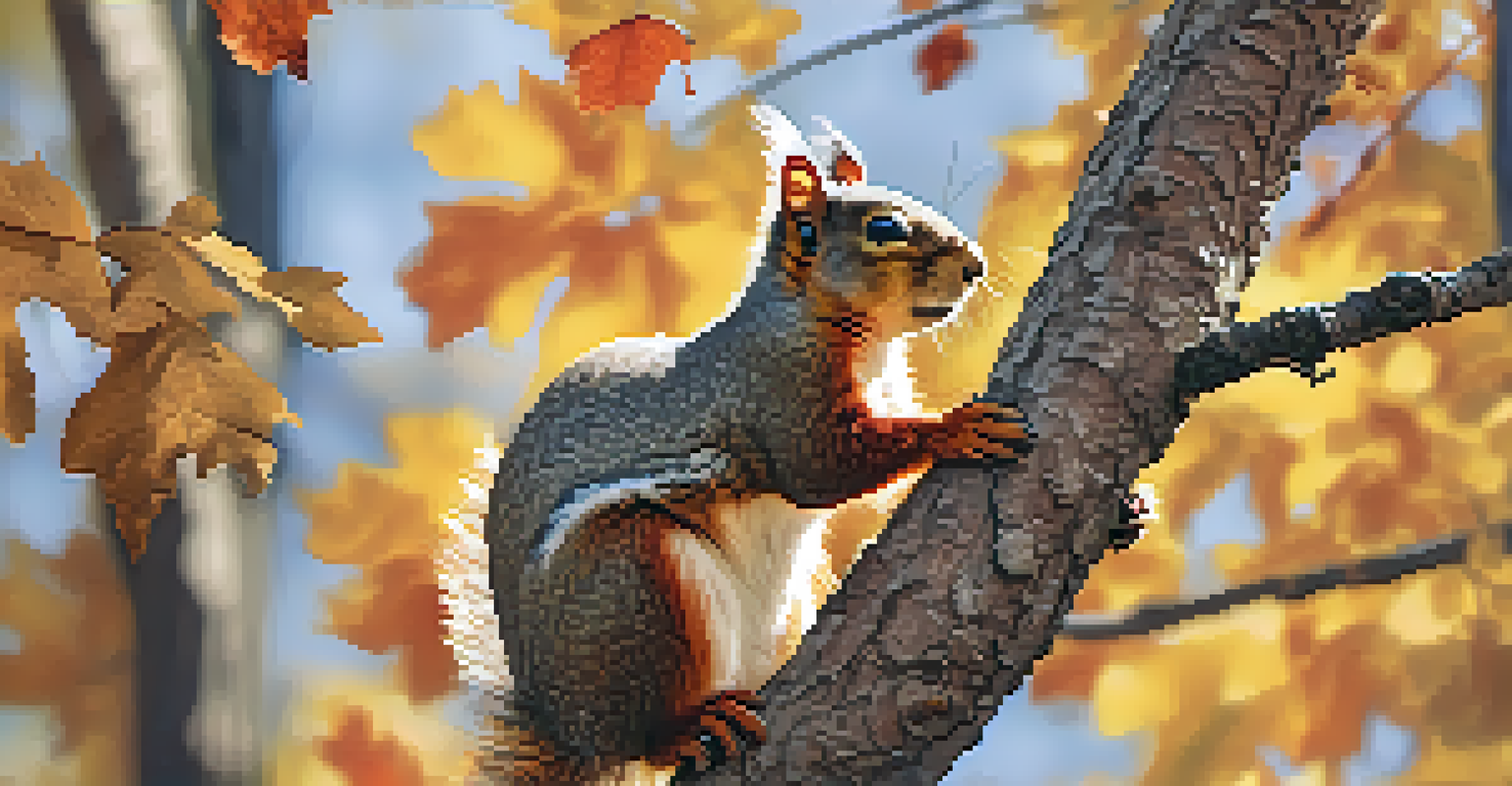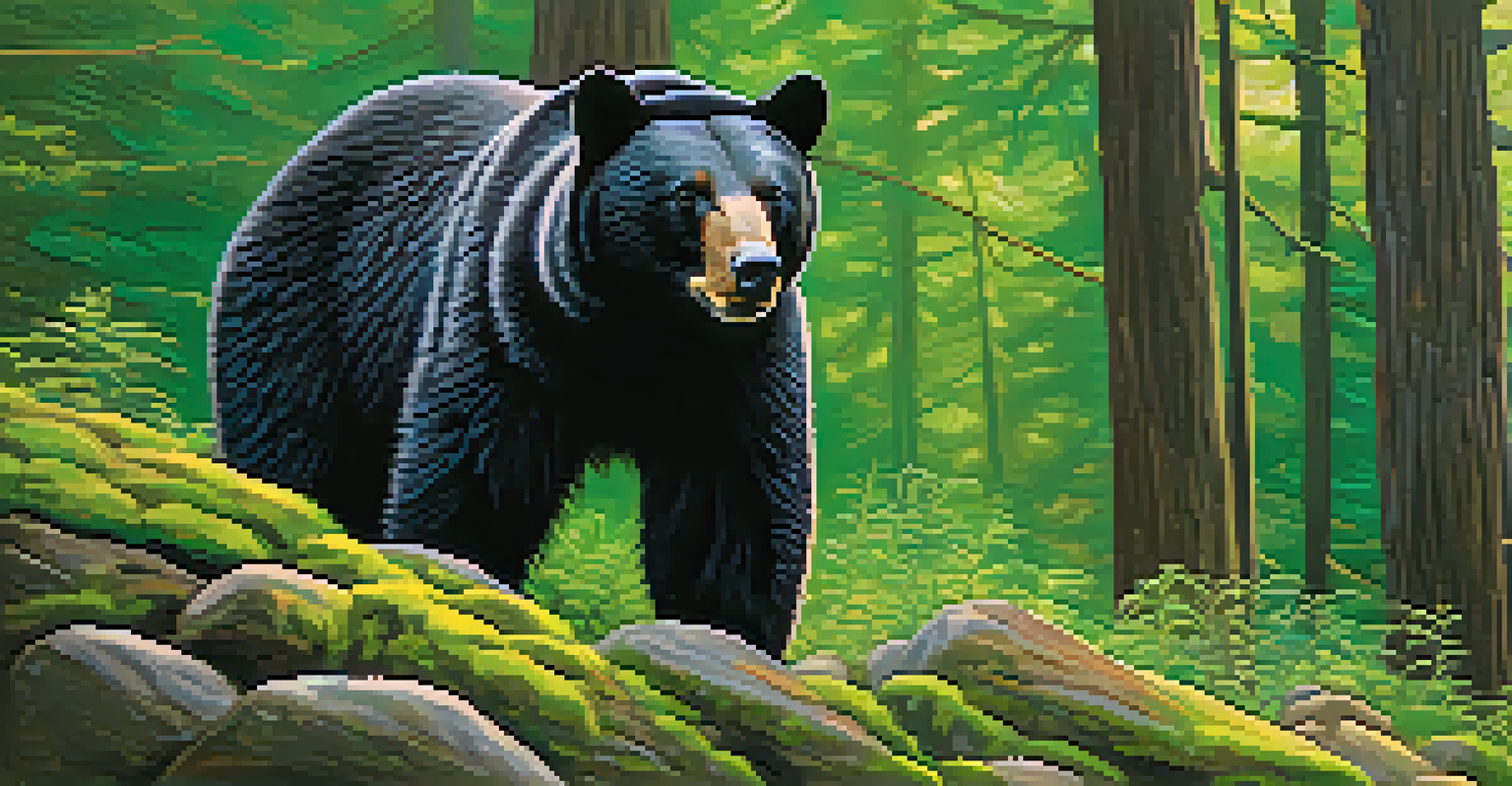How to Identify Common Mammals in Big Bear Region

Understanding the Big Bear Ecosystem and Its Wildlife
Big Bear is a beautiful mountain region in Southern California, known for its rich biodiversity. The area is home to an array of mammals, thanks to its mix of forests, lakes, and meadows. This diversity is vital for maintaining a balanced ecosystem, where each species plays a unique role.
In every walk with nature one receives far more than he seeks.
From the playful squirrels to the majestic black bears, the wildlife in Big Bear is not just fascinating; it's also crucial for the environment. Mammals in this region interact with their habitat in various ways, influencing the plant life and other wildlife. Understanding these relationships can enhance your appreciation for nature during your visit.
As you explore the trails or relax by the lake, keep an eye out for these creatures. Knowing what to look for can make your outdoor experience even more rewarding, whether you're hiking, biking, or simply enjoying the scenery.
How to Spot Black Bears: Signs and Habits
Black bears are one of the most iconic mammals in the Big Bear region. These large, powerful animals can often be spotted foraging for food, especially during the spring and summer months. Look for signs such as claw marks on trees, overturned rocks, or bear scat, which can indicate their presence.

When identifying black bears, pay attention to their size and color, which can vary from light brown to black. They typically have a broad head and a short, rounded snout. If you see one from a distance, remember to stay calm and observe from a safe distance, as they are usually more interested in foraging than interacting with humans.
Diverse Wildlife Enhances Ecosystem
Big Bear's rich biodiversity, including mammals like black bears, coyotes, and squirrels, plays a crucial role in maintaining a balanced ecosystem.
Bears are most active at dawn and dusk, so these times are ideal for spotting them. Remember, while they may look cute and cuddly, they are wild animals deserving of respect and space.
Recognizing Coyotes: Calls and Tracks
Coyotes are another prevalent mammal in the Big Bear area, often heard before they are seen. Their distinctive howls and yips can be heard during the night, especially in the cooler months. If you’re hiking during the day, keep an ear out for these sounds to identify their presence.
Wildlife is not a luxury but a necessity; it is essential to the health of our planet.
When it comes to identifying coyotes visually, look for their slender bodies, bushy tails, and pointed ears. Their fur ranges from light gray to a reddish-brown, which helps them blend into their surroundings. You might also notice their tracks—long and narrow, with a distinct claw mark pattern.
Coyotes are highly adaptable and play a crucial role in controlling rodent populations, making them an essential part of the ecosystem. Observing them can be fascinating, so try to remain quiet and patient when you’re in their territory.
Identifying Squirrels: Behavior and Habitat
Squirrels are among the most common mammals you’ll encounter in Big Bear, often seen darting up trees or scurrying across trails. Both tree squirrels and ground squirrels inhabit this area, each with distinct behaviors and habitats. Tree squirrels typically nest in high branches, while ground squirrels prefer burrows in the ground.
Their playful antics and bushy tails make them quite entertaining to watch. If you see a squirrel standing upright, it’s likely surveying its surroundings for any potential threats. Their chatter can also be a giveaway, as they communicate with each other through various sounds.
Identifying Local Mammals
Recognizing signs and behaviors of local mammals, such as deer and raccoons, can enhance your outdoor experience and foster a deeper appreciation for nature.
While they might seem small and harmless, squirrels play a vital role in seed dispersion, helping to regenerate forests. So, as you enjoy your time outdoors, take a moment to appreciate these lively creatures and their contribution to the ecosystem.
Spotting Deer: Signs and Seasonal Behavior
Deer are a common sight in the Big Bear region, especially during the early morning and late evening. Mule deer, the most prevalent species here, can often be seen grazing in open areas or along forest edges. Look for their characteristic large ears and long legs, which help them navigate through the terrain.
During different seasons, deer exhibit varying behaviors. In the fall, they may be more active as they prepare for mating season, while in winter, they stick to lower elevations for food. Tracks can often be found in the snow or muddy areas, showcasing their cloven hooves and distinct patterns.
When observing deer, it’s best to keep a respectful distance. They are generally shy animals, and sudden movements can scare them away. Enjoy the experience of watching them in their natural habitat, as it’s a beautiful reminder of the wildlife that calls Big Bear home.
Recognizing Raccoons: Nocturnal Habits and Features
Raccoons are fascinating nocturnal mammals that are commonly found in the Big Bear area. With their signature black masks and ringed tails, they are easily recognizable. While you may not see them during the day, their signs are often visible, such as overturned trash cans or paw prints around water sources.
These clever animals are known for their dexterous front paws, which they use to forage for food. Raccoons are omnivores, meaning they eat a variety of foods, from fruits and nuts to small animals and human leftovers. Their opportunistic feeding habits make them an important part of the ecosystem.
Importance of Wildlife Conservation
Understanding the roles of Big Bear's mammals not only enriches your experience but also emphasizes the importance of conserving these incredible creatures.
If you’re camping or staying in cabins, remember to secure your food and trash, as raccoons can be quite resourceful. Observing them from a distance can provide a delightful experience under the stars.
The Role of Bobcats in the Big Bear Ecosystem
Bobcats are elusive yet vital members of the Big Bear wildlife community. These medium-sized cats are known for their tufted ears, short tails, and spotted fur. While they are not often seen, their presence is crucial for maintaining balance within the ecosystem by controlling smaller mammal populations.
Bobcats are primarily solitary animals, hunting at dawn and dusk. They are stealthy predators, often stalking their prey before making a swift and powerful leap. Look for signs of their presence, such as tracks in the snow or disturbed vegetation where they’ve ambushed their next meal.

While encountering a bobcat in the wild is rare, knowing about their role can deepen your appreciation for the wildlife in Big Bear. They may be elusive, but their impact on the ecosystem is significant, reminding us of the delicate balance of nature.
Conclusion: Cherishing and Protecting Big Bear's Mammals
As you venture through the beautiful landscapes of Big Bear, take time to observe and appreciate the diverse mammals that inhabit the region. Each species plays its part in the ecosystem, contributing to the health of the environment. Understanding these animals enhances your outdoor experience and fosters a sense of responsibility toward wildlife conservation.
Wildlife encounters can be fleeting but memorable, so practice patience and respect during your explorations. Whether you’re hiking, biking, or simply enjoying a picnic, being aware of your surroundings can lead to unexpected wildlife sightings.
In conclusion, Big Bear is a treasure trove of wildlife. By learning how to identify these common mammals, you not only enrich your own experiences but also contribute to the awareness and protection of these incredible creatures.